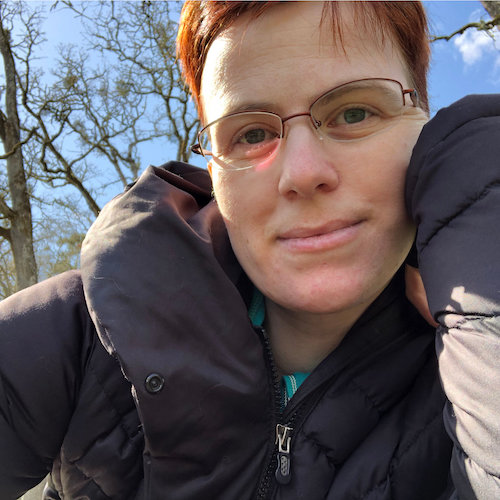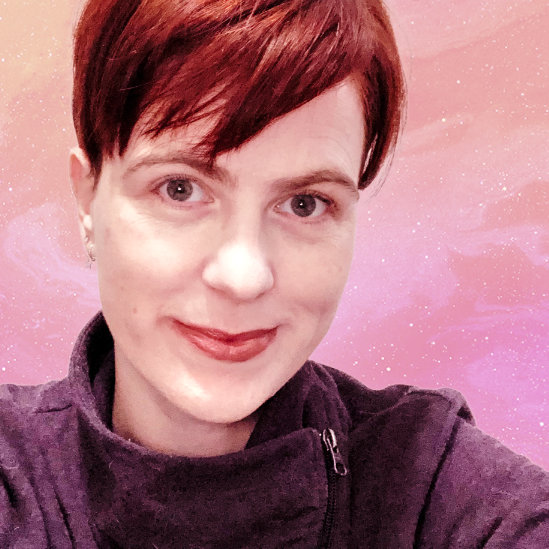Self-Loathing Serves a Purpose (and How to Heal)
It often appears that we resist healing and self-love.
This doesn’t, on the surface, make sense. We naturally go towards feeling good, and self-love definitely sounds like it would feel better than self-hatred. Right?
And yet, when we feel self-hatred, we often hang onto it. We keep practicing negative self-talk. We keep rejecting ourselves. Even when we have had moments of feeling loved, they fall away, and we return to feeling not good enough. It can feel almost wrong to do anything else. Our mind seems to be actively trying to keep a negative self-relationship in place.
Why? The answer lies in how self-loathing comes about.
Where does self-loathing come from?
When we experience a wound that overwhelms us with pain, our mind has to do something with that pain and what it does is fracture our consciousness. Each fragment gets a piece of the experience, which stops it from all being experienced at once.
The more intense the overwhelm, the more fracturing is created, and the deeper the chasms and polarities between different fragments. The most extreme version is Dissociative Identity Disorder, but all serious emotional wounding creates some version of this to varying degrees.
Our subconscious only cares about survival, and if we are still alive, then it knows that the fracturing worked. It kept us alive, through an experience where we felt we might die.
Because it “worked”, our mind freezes the fracture in place, and sets about maintaining it. This is why defense mechanisms exist. They are defending against healing, connection, love–anything that would begin to repair that fracture, and let those overwhelming feelings of vulnerability and powerlessness come flooding back in.
Our subconscious mind actively resists healing the fractures, because the fracture represents survival. We know how to handle this, it says. But if we un-fracture, if we become whole, that unprocessed experience is waiting for us. Why would we be able to handle it now if we couldn’t handle it before? Better not take that chance.
Self-loathing (or other forms of self-rejection) is the actual mechanism by which we keep the fracture in place. By criticizing, banishing, suppressing, and judging parts of ourselves, we keep those fragments from being re-integrated into our consciousness.
And the deeper the wound, the deeper the fracture, and the more intense the self-loathing.
We maintain self-loathing as a matter of survival.
Essentially, our mind’s logic is, yes, this hurts, but it’s better than dying.
The inner violence we do to ourselves mimics the violence that was done to us. It has to. Our subconscious doesn’t really have any other options. It’s not a creative part of our mind, it’s a survival part of our mind. It does what it knows, and whatever way we found to cope with it at that exact moment of overwhelm, it’s going to keep doing, because it kept us alive.
This explains why we can’t heal from someone else loving us. It’s not enough to just be loved, because as long as we have that habit of inner violence, it keeps the fracturing in place. We will feel good for a minute, but then the inner violence will take over, and erase whatever goodness we felt.
We can end up addicted to things that give us temporary relief from the negative feelings, but they cannot actually heal the problem, because they never undo the fracturing or the self-violence that keeps it in place.
The sad implication of this is that the worse we were hurt, the more our mind is going to come up with self-hatred as a strategy, and thus the more pain we will be in, and the more we will be drawn to coping mechanisms just to manage the pain.
So, what is the actual solution? How do you heal self-loathing?
Healing is always a non-linear process. It’s a stitching-back-together of all these pieces of ourselves, and it is intimately tied up in our own personal story and the meaning we have made of everything that happened to us. So there is no one-size-fits-all approach to healing.
But there are certain principles we can apply, over and over, to move us in the direction of healing:
- Find safety. Physical safety, emotional safety, boundaries, time, space, your environment, who you are around – track what helps you feels safe both externally and internally and get yourself more of it.
- End self-violence. This includes self-criticism, self-condemnation (shame), self-blame (guilt), self-neglect, and any form of harshness, rejection, or judgement toward self.
- Practice self-love. This includes self-acceptance, self-nurturing, self-validation, self-care, self-empathy, self-compassion, and self-forgiveness. Any possible way you would love someone else, or want someone to love you, you can and need to give this to yourself. Love is not a feeling, it’s an action. Actively love yourself.
- Allow whatever arises in your conscious awareness, in an attitude of acceptance. This allows the integration process to occur. De-fragmentation is a natural process that our mind wants to do, if there is nothing actively blocking it. (That’s why when we finally feel safe, our issues often surface spontaneously.)
Healing takes courage and persistence, but it is entirely do-able.
Deciding to love yourself takes courage. It is actually scary to your mind to give up any strategy that it has used to survive. It can feel impossible or wrong or just completely out of reach to get to a place of genuine self-love and self-acceptance. But you can get there, trust me! This is a journey I have been on for a long time, and every step forward is worth taking.
Working with mantras can help you soothe yourself about the process of healing. For example:
- It’s safe to heal.
- It’s OK to feel this.
- It makes sense that I’m scared, and it’s OK.
- I can go as slow as I need to.
- There is nothing wrong with loving myself.
- I don’t have to figure it all out today, I just have to keep going in the right direction.
- Every step in the direction of healing and self-love is progress.
Find the ones that help soothe your own system, and then repeat them to yourself as much as you need to.
Be gentle with yourself. This is deep, tender work.

Free Ebook – How to Stop Being Cruel to Yourself
Permanently stop self-criticism, self-doubt, and comparing yourself to others.

Hi there! I’m Emma and I write about self-liberation. My writing is meant to share my process & inspire your own. If you want more frequent/current writing, visit my Substack Sparkly Dark.
If my writing has helped you, you can leave a tip at buymeacoffee.com, leave a comment below, learn more about me, or follow me on Instagram.
Thanks so much for reading! ~Emma


